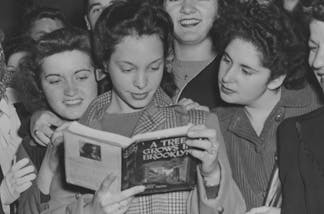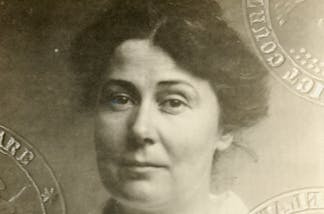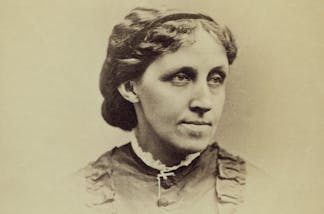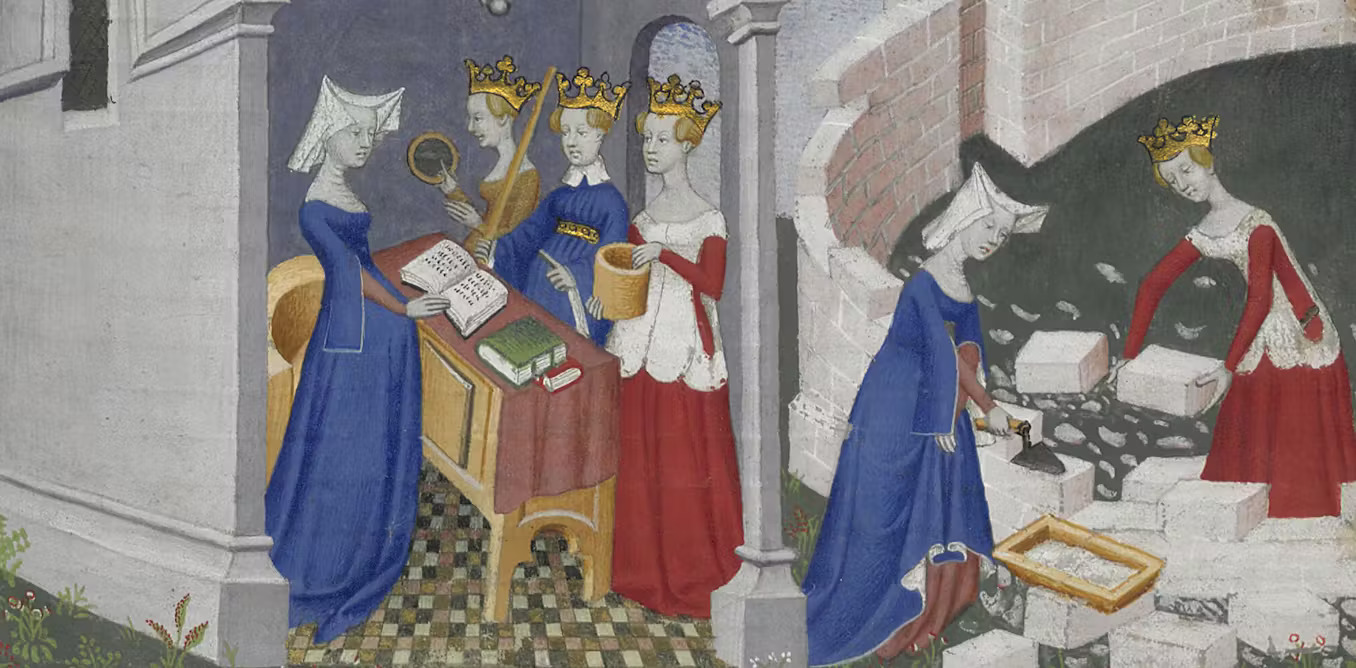 An illustration from Christine de Pizan’s ‘The Book of the City of Ladies.’ Fine Art Images/Heritage Images via Getty Image –
An illustration from Christine de Pizan’s ‘The Book of the City of Ladies.’ Fine Art Images/Heritage Images via Getty Image –
But sometimes I wonder what the 34-year-old pop star would think of the life and work of Italian-born French writer Christine de Pizan.
Back in the 15th century, Christine – who scholars customarily refer to using her first name, because “de Pizan” simply reflects her place of birth, and she may not have had a last name – dealt with her share of “dads, Brads and Chads,” just as Swift has in the 21st century.
Thought to be the first French woman to make a living as a writer, Christine compiled “The Book of the City of Ladies” in 1405 to challenge the negative stereotypes of women in the Middle Ages. In it, she offers dozens of examples of accomplished women found throughout history, including queens, saints, warriors and poets.
Christine’s writings continue to resonate – especially with women – and are used widely in college courses on women and gender. I recently used excerpts from “The Book of the City of Ladies” in my course on women and gender in early modern Europe.
In reflecting on Christine’s writings from over 600 years ago, I am struck by how she recognized the pernicious effects of attacks on women’s intellect and accomplishments – the ways in which they could be internalized and accepted if women did not challenge the stereotypes.
Building the ‘City of Ladies’
Christine de Pizan was born in Italy but spent much of her life in the royal court of France during the rule of the House of Valois.
Her father, a court physician and astrologer, encouraged her education alongside her brothers. She had three children with her husband, a French royal secretary named Etienne de Castel, who died when Christine was just 25 years old.
Widowed and facing the prospect of raising and financially supporting children on her own, she turned to composing works that appealed to elites, resulting in commissions from patrons. She wrote on a variety of topics, including a poem celebrating Joan of Arc’s success on the battlefield.
But her most ambitious and enduring work is “The Book of the City of Ladies.”
Discouraged by all the misogyny she had read, Christine whimsically claimed that she had received a vision from three ladies: Reason, Rectitude and Justice, who tasked her with the project.
By gathering stories about the accomplishments of women, Christine set out to build an allegorical city where women and their achievements would be safe from the insults and slander of men.
In “The City,” she specifically referenced “The Lamentations of Matheolus,” from 1295, a lengthy essay written in Latin by a cleric from Boulogne-sur-Mer, France. Its French translation from the late 1300s would have been the version Christine read.
It is full of hateful views of women, but Matheolus saves most of his ire for wives.
“Anyone who wishes to immolate himself on the altar of marriage will have a lot to put up with,” he writes, adding that the torture of marriage “is worse than the torments of hell.” He derides women as “always quarrelsome … cruel, and shrewish” – “terribly perverse” individuals who have “deceived all the greatest men in the world.”
Matheolus was not alone in his low views of women. Other popular writings of the time included Jean de Meun’s “The Romance of the Rose,” which portrayed women as untrustworthy and jealous, and an anonymous treatise, “On the Secrets of Women,” which offered misinformation about the biology of women.
With so much misogyny coming from so many sources, Christine acknowledged how easy it was for women to believe what was said about them:
“It’s no wonder that women have been the losers in the war against them since the envious slanderers and vicious traitors who criticize them have been allowed to aim all manner of weapons at their defenseless targets.”
Christine recognized the reasons behind this widespread misogyny: Women who were smarter and kinder than men were seen as a threat and a challenge to the established patriarchy of Western society.
Taylor Swift’s ‘big ole city’
Like Christine, Swift is a gifted writer who began making a living with her pen when she was a teenager.
She has built her own city of sorts to protect her reputation, her music and her self-esteem.
In her 2020 documentary “Miss Americana,” Swift opens up about her struggles with media scrutiny, which contributed to an eating disorder. In it, she describes herself as “trying to deprogram the misogyny in my own brain.”
She sued a DJ that groped her and won, leading to her being featured as one of the “silence breakers” on the cover of Time magazine in 2017 at the dawn of the #MeToo movement. And in 2021, she began reclaiming her words and music by re-recording her older albums as “Taylor’s Versions” after the original masters were sold by her first record label without her consent.
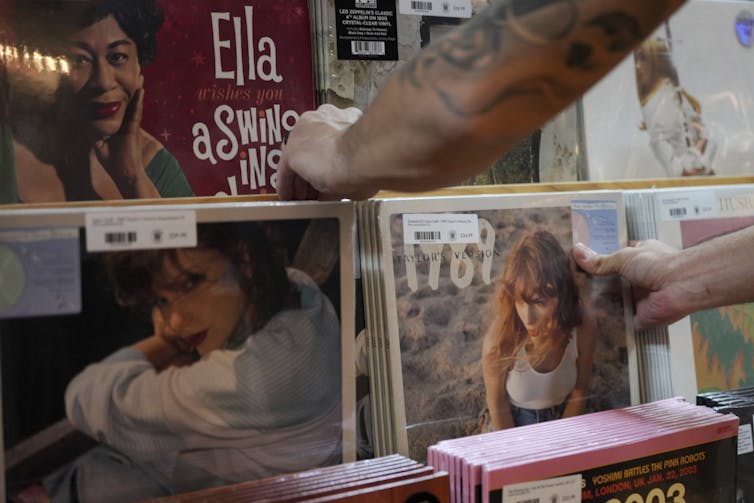
–
In her songs, Swift also repeatedly confronts the men who have discounted her talent and intellect. Her song “Mean” is widely believed to be about the critics who questioned her talent, such as Bob Lefsetz, who wrote that Swift clearly couldn’t sing and had possibly destroyed her career after a shaky performance at the 2010 Grammys.
“Someday, I’ll be livin’ in a big, ole city,” Swift retorts in the track, “And all you’re ever gonna be is mean.”
At the conclusion of “The Book of the City of Ladies,” her mission to record the achievements of women accomplished, Christine de Pizan invites her female readers to join her:
“All of you who love virtue, glory and a fine reputation can now be lodged in great splendor inside its walls, not just women of the past but also those of the present and the future, for this has been founded and built to accommodate all deserving women.”
Though the City of Ladies was built centuries ago, I have a feeling that Taylor Swift would be right at home in that big, ole city.
–
- Gender
- Italy
- France
- Writing
- Misogyny
- Kanye West
- Women’s history
- Taylor Swift
- Middle Ages
- Women’s history month
- Women writers
- wife
–
Partners
Quinnipiac University provides funding as a member of The Conversation US.
Republish our articles for free, online or in print, under a Creative Commons license.
–
–
Want to write?
Write an article and join a growing community of more than 179,900 academics and researchers from 4,904 institutions.










